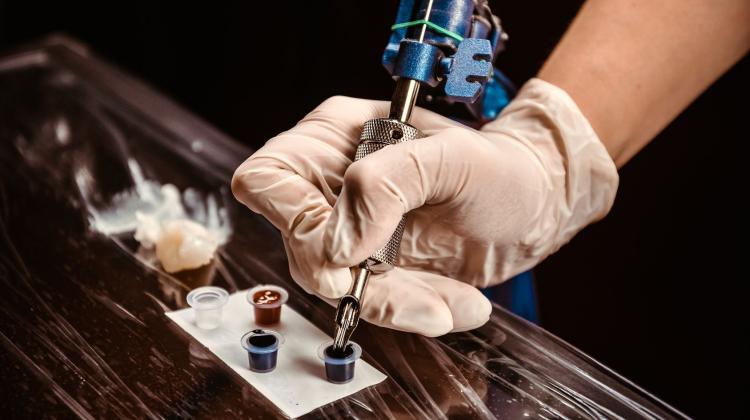Tattoos are dangerous because of toxic dyes
 Photo: Fotolia
Photo: Fotolia
Tattoos can be bad for your health not only because of potential infections but also toxic components of inks that are inserted under the skin - experts warn. Studies show that green ink, for example, has a high arsenic content.
Researchers from the School of Public Health of the Medical University of Silesia in Katowice have examined the dyes used by tattoo artists for heavy metals content and health risks. Samples were tested for cadmium, lead, zinc, arsenic, chromium and mercury content.
Studies have shown significant levels of toxic heavy metals in tattoo inks, which differed depending on the ink colour and manufacturer. Colourful inks contain cadmium, lead and arsenic at higher concentrations than more commonly used black inks. In addition to heavy metals, pigments may contain nanoparticles, phthalates and hydrocarbons that may have a detrimental effect on the hormonal balance, and some of them are carcinogenic. Using coloured inks in dense patterns to cover large areas of the body can pose a health risk. The most contaminated turned out to be green inks, which had a high content of a very toxic element, arsenic.
"Our research shows that if someone wanted to tattoo a large part of their body surface with green ink, they could exceed the toxic dose allowed for arsenic" - said Dr. Ewa Marchwińska-Wyrwał.
"Every person who decides to have a tattoo should carefully consider a number of issues: its surface, because ink is inserted into the skin, that is directly into the body, its colour, and its manufacturer, because the degree of contamination depends on the brand" - added Dr. Grzegorz Dziubanek, head of the Department of Environmental Health Risks.
Researchers from the Medical University of Silesia also cited the results of research on dyes conducted abroad. German scientists injected tattoo inks under the skin of mice. 32 percent dye disappeared 42 days after injection, larger molecules accumulated in the lymph nodes, and nanoparticles probably entered the bloodstream and spread through the body.
This is confirmed by an experiment conducted in China in 2009, in which silver nanoparticles and microparticles were injected under the skin of rats. Microparticles did not enter the bloodstream, while nanoparticles were transported to the kidneys, liver, spleen, lungs and brain.
Tattooing involves inserting a small amount of pigment under the skin with a puncture. Tattooing can also be dangerous to human health due to skin damage and the possibility of infection. Dr. Teresa Bilewicz-Wyrozumska from the Department of Environmental Health of the School of Public Health in Bytom explained that with appropriate hygiene the risk is minimal. "The general rule of thumb for every procedure in which the tissue is disrupted should be opening the needle pack or replaceable tip of the device in our presence" - she emphasised.
Anna Gumułka (PAP)
lun/ mni/ kap/
tr. RL
Przed dodaniem komentarza prosimy o zapoznanie z Regulaminem forum serwisu Nauka w Polsce.















